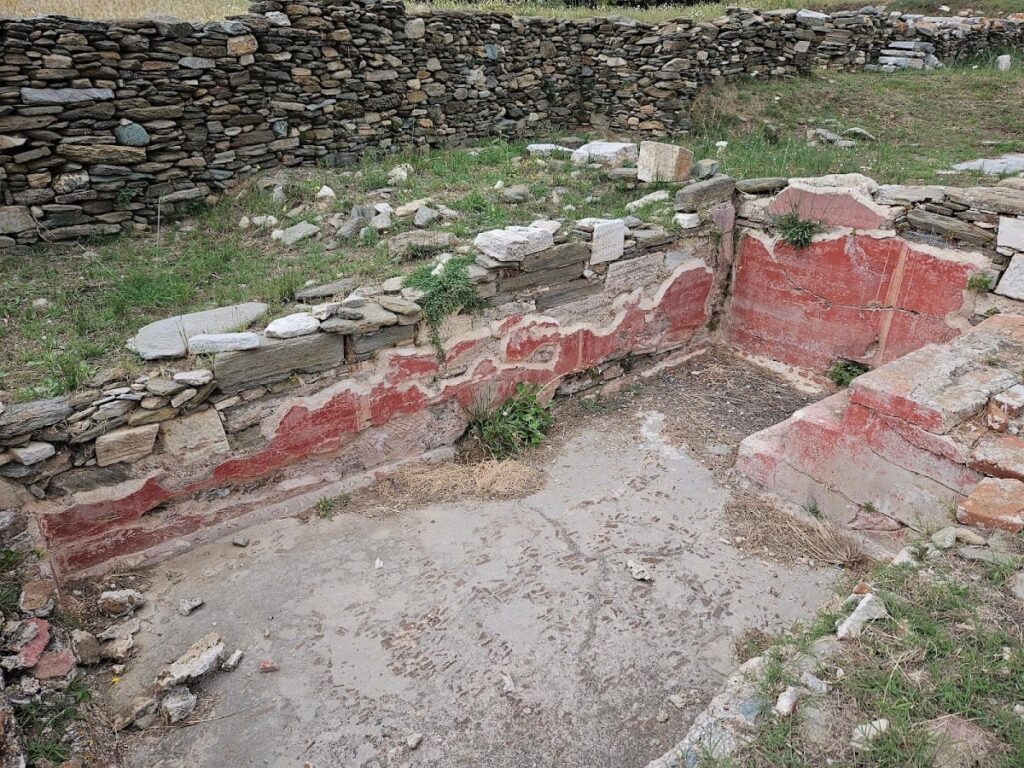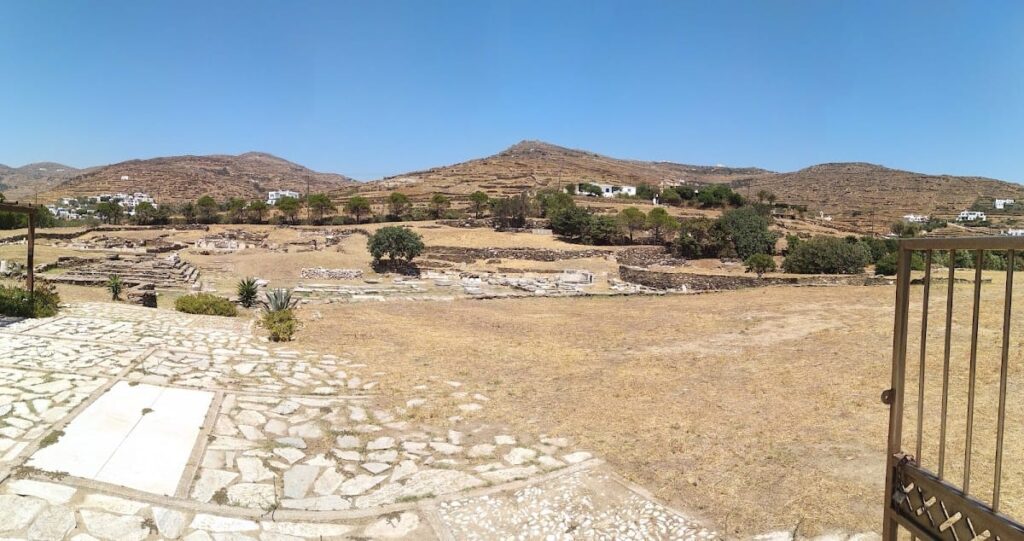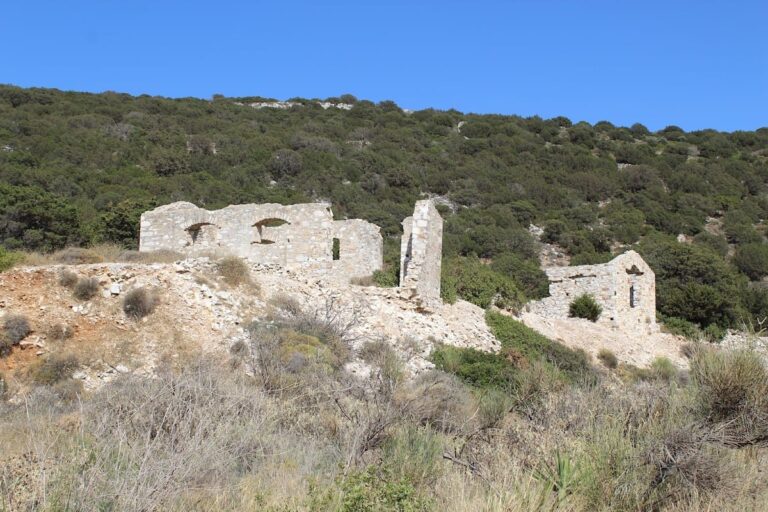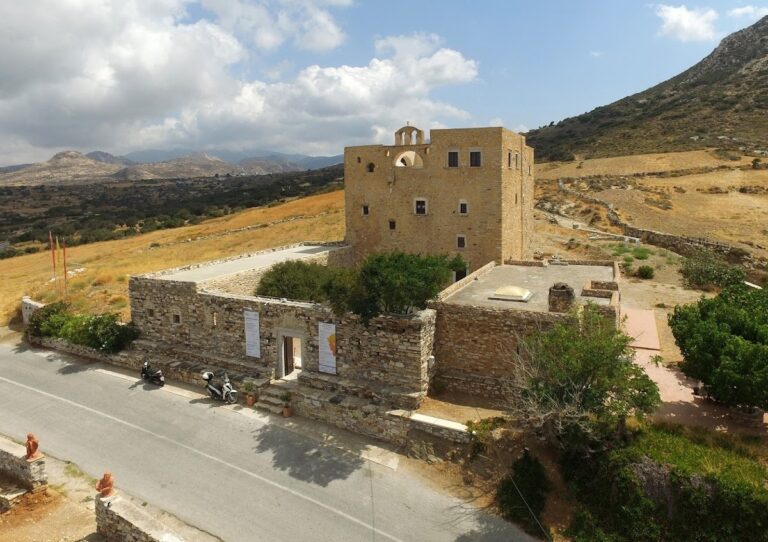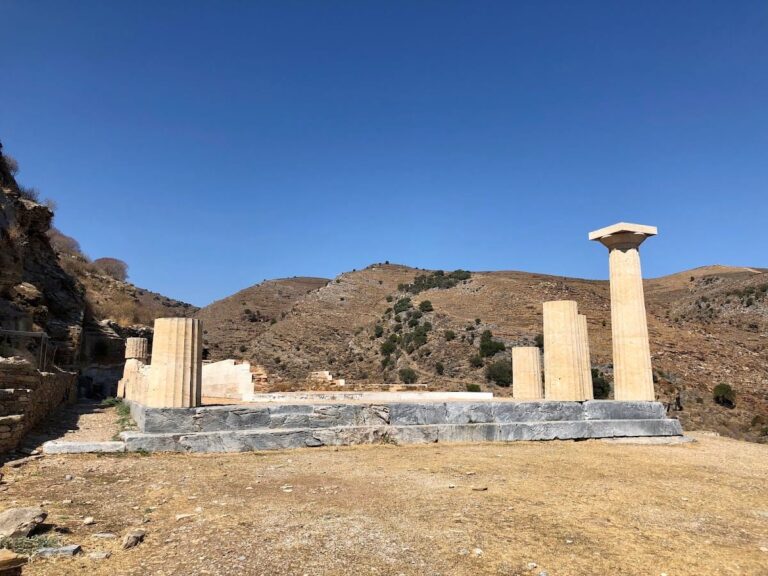Kionia Archaeological Site: Ancient Greek Sanctuary on Tinos Island
Visitor Information
Google Rating: 4.1
Popularity: Very Low
Google Maps: View on Google Maps
Country: Greece
Civilization: Greek, Roman
Remains: Religious
History
The Archaeological Site at Kionia, located on the island of Tinos in Greece, was established by the ancient Greeks as a religious sanctuary dedicated to the god Poseidon and his wife Amphitrite. This sanctuary played a central role in the spiritual and social life of the nearby town of Tinos.
In the mid-4th century B.C., the original temple, which stood within a sacred grove, was replaced by a larger Doric-style structure. This new temple was built using local marble and featured sculptural decorations representing Poseidon’s symbols, such as dolphins and the trident. The sanctuary attracted visitors from across the Greek world, including kings and generals, who came to offer sacrifices and purify themselves before traveling to the nearby sacred island of Delos.
During the 3rd century B.C., the sanctuary underwent significant rebuilding. At this time, the worship of Amphitrite gained prominence, especially due to her reputation for healing women facing fertility challenges. Poseidon was also honored as a healer. The site became the center of the Poseidonian Games, held in the winter months of January and February, which included athletic contests, theatrical performances, and ritual sacrifices.
By the late 2nd century B.C., the sanctuary complex expanded with the addition of monumental structures such as a large gallery (stoa) and an altar.
The sanctuary’s decline began in the mid-1st century B.C., and it was eventually abandoned by the 3rd century A.D. Following its abandonment, Christian authorities destroyed the temple and repurposed its building materials. This process of quarrying and reuse was later continued by Venetian and Turkish occupants, leading to the loss of much of the original structure.
In the early 20th century, Belgian archaeologists H. Demoulin and P. Graindor conducted excavations at the site, uncovering baths, mosaics, statues, a spring, and a sundial attributed to the ancient craftsman Andronikos of Kyristos. Many of these artifacts are now housed in the Archaeological Museum of Tinos.
Remains
The sanctuary at Kionia was originally centered around a rectangular temple with two main interior areas: the pronaos, or front porch, and the naos, the main chamber where the cult statues would have stood. The mid-4th century B.C. reconstruction produced a larger temple built in the Doric order, characterized by sturdy columns and simple, geometric decoration. Local marble was the primary building material, giving the temple a distinctive regional character.
The sanctuary complex included several additional structures. Excavations revealed baths, which likely served ritual purification purposes, and a monumental stoa, or covered gallery, constructed in the late 2nd century B.C. A large altar was also part of the complex, used for sacrifices during religious festivals such as the Poseidonian Games. A spring or fountain was found on site, providing water for ritual and practical use.
Archaeologists uncovered mosaics and statues that decorated the sanctuary, indicating a richly adorned religious center. A sundial discovered at the site is attributed to Andronikos of Kyristos.
Today, only the foundations of the temple and surrounding structures remain visible. The superstructure has not survived due to extensive quarrying and reuse of the building materials after the temple’s destruction in the 4th century A.D. The site faces away from the nearby beach in Kionia, positioned to be accessible to visitors arriving by sea in ancient times.



